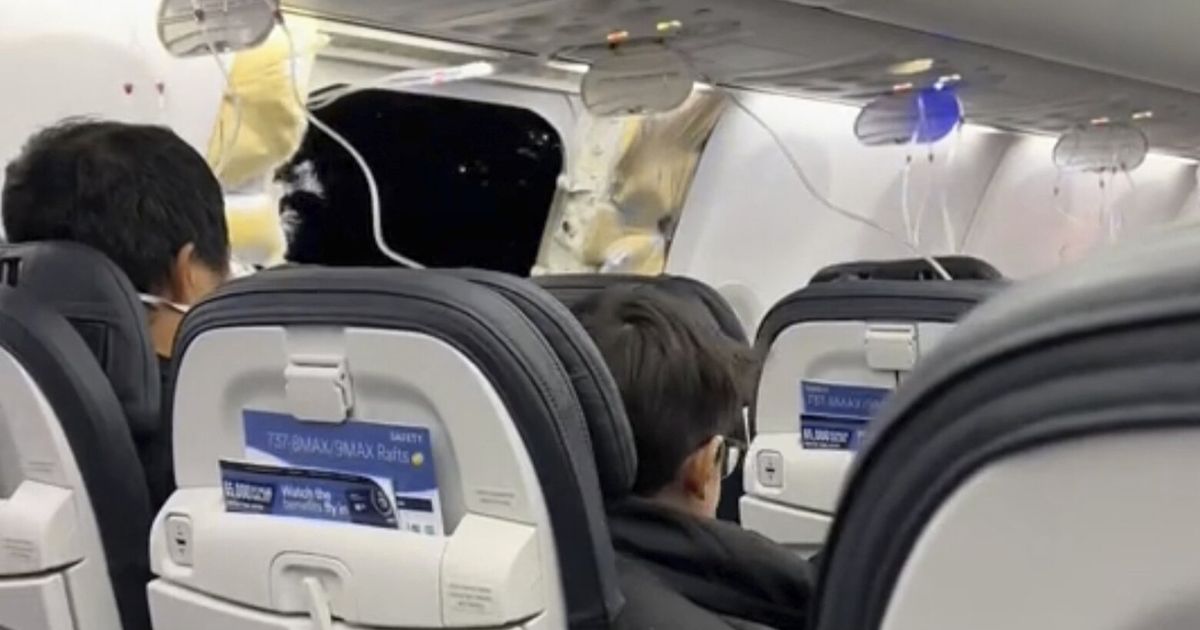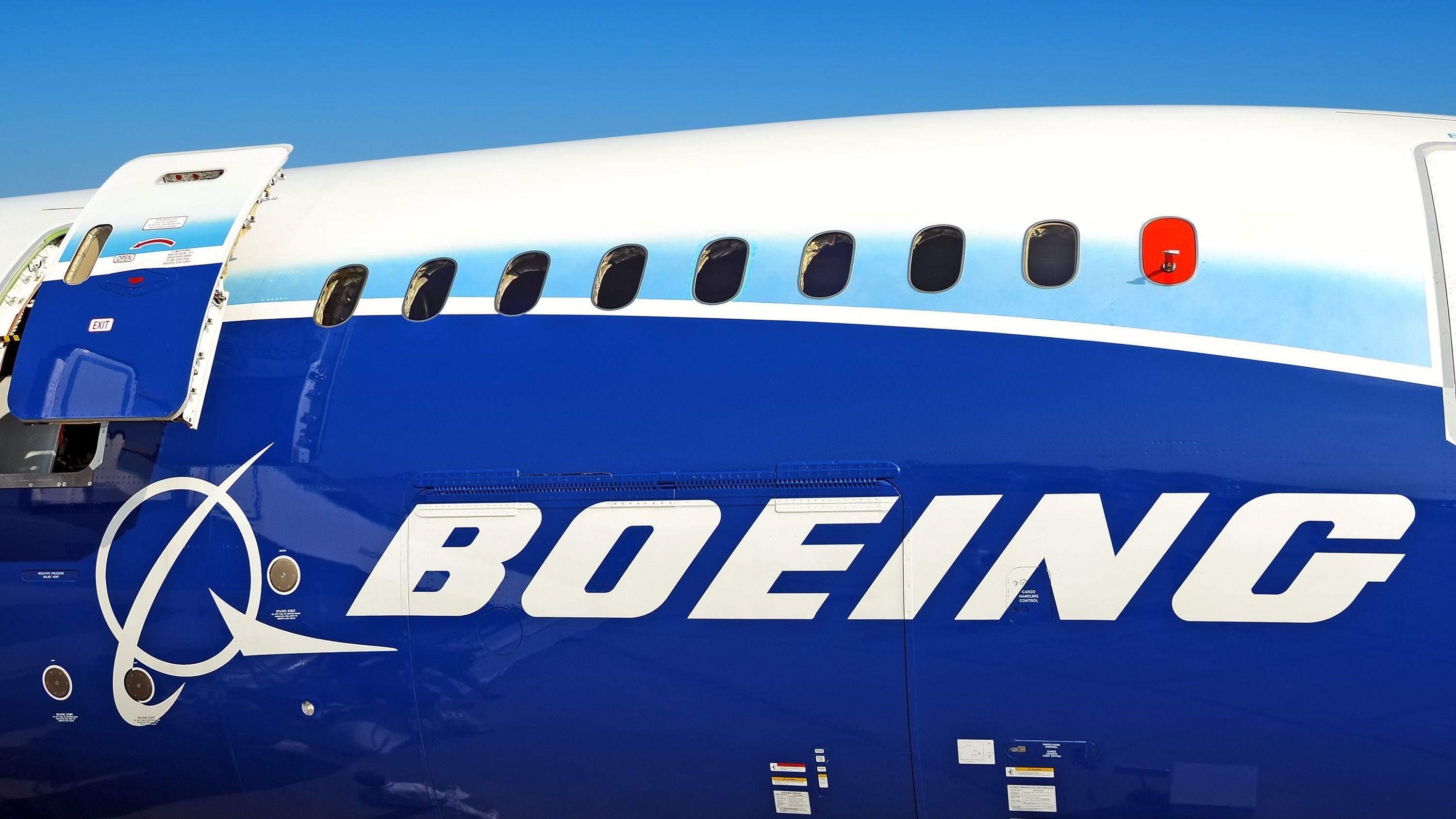As Alaska Flight 1282 landed in Portland, flight attendants were finally able to ask passengers the question that had been wracking them since they first heard a loud boom aboard the Boeing 737 MAX: Had anyone been seated next to what was now a gaping hole in the side of the plane?
The passengers didn’t understand the question, so a flight attendant asked again, more pointedly — had anyone been ejected from the airplane?
“At the point where I first saw the hole, I saw five empty seats,” a flight attendant told National Transportation Safety Board investigators a few days after the Jan. 5 incident. “So I was absolutely certain that we had lost people out of the hole and that we had casualties.”Fresh details of the terrifying ordeal were outlined in NTSB documents released this week before the agency’s hearings looking at what occurred on the Jan. 5 Alaska Air flight, when a wrongly installed panel blew out of the Boeing plane as it climbed out of Portland.Among the cache of thousands of pages are interview transcripts with the four Alaska flight attendants. In hourslong interviews, the attendants detailed the chaos after the explosive decompression, their interactions with passengers —including a screaming mother and an unaccompanied 5-year-old on his first flight — and the horrifying uncertainty of not knowing whether any passengers had been lost or if the pilots were even alive.The start of the flight to Ontario, Calif., had been uneventful, they recalled. Passengers seemed to be in good moods as they found their seats; the 5-year-old boy was the very last to board and was seated with two brothers who were also unaccompanied minors. A flight attendant noted passengers paid attention to the safety briefing.
As the plane climbed through 16,000 feet, two flight attendants in the back chatted idly while one enjoyed the M&Ms a passenger had gifted to the crew. Then an explosion, described first as a hiss then like a cannon. The overhead masks fell and the lights came on.
“It was like an eternity of just disbelief,” one flight attendant said.
A flight attendant got up and looked down the aisle, not realizing there was a hole – until they saw a woman’s hair flapping in the wind. Her colleague became emotional, saying “we lost passengers, we lost passengers out the window.”The scenario had happened before: In 1989, nine passengers on United Airlines Flight 811 were killed when they thrown out of a hole caused by a cargo door bursting at 23,000 feet. The Boeing 747 was about 20 minutes into the flight from Honolulu en route to New Zealand.
“I remember just telling him, ‘We can’t think about that right now, we have all these passengers we have to take care of,’” the flight attendant recalled. They were especially concerned about the unaccompanied minors and lap babies, whose faces were too small for the oxygen masks.The front flight attendants were also assisting passengers and trying unsuccessfully to communicate with the pilots. The wind was so loud that they couldn’t hear anything. It was incredibly hot – one attendant said it felt like her makeup was melting, another in the back compared it to boarding an old aircraft in Mexico with no air conditioning. They were told later the heat may have been caused by exhaust coming in through the hole.
All four moved throughout the plane, even when they weren’t sure it was safe for them to be out of their seats. Without a portable mask, one flight attendant tried to “monkey bar” from mask to mask like they had been taught in training to get to the 5-year-old, but the masks were so tangled they opted to go without a mask.
“We had to just use our own intuition and that involved taking a risk, it involved us saying ‘is it safe for us to get up?’ We don’t know,” one said.“What we know is there’s a tiny little boy who might need oxygen and so we were motivated to just, I guess, put that individual’s safety above ours in the moment because we just didn’t know what else to do.”
Right before they arrived back at the Portland airport gate, a flight attendant ran toward the row where the hole was and yelled: “Is everybody here, Do we have everybody here?” As they went through the different sections, each passenger said yes. The flight attendant gave a thumbs up to their colleagues in the front.Flight attendants later learned the two closest seats hadn’t been occupied — a rarity since passengers often moved to sit in window seats.“Those two seats were empty even though I’m sure there would’ve been somebody who would have preferred not to be in a center seat and would have happily taken a window seat,” the flight attendant said. “Thank God they didn’t.”One flight attendant noted the scenarios that could have led to a far worse outcome in the plane: The passenger in the aisle seat didn’t unbuckle their seat belt and lay down, like a lot of people do. There wasn’t a child sitting on someone’s lap next to the window. A flight attendant hadn’t yet started walking to the back of the cabin to begin beverage service.
“We got so lucky,” the flight attendant said.
Toward the end of their interview, a flight attendant said they didn’t feel safe getting on a Boeing MAX again, and had a question of their own:
“When this is all said and done, investigations are over … how can we know this is not going to happen again and this is safe?” they said. “Because that should not have happened.”





